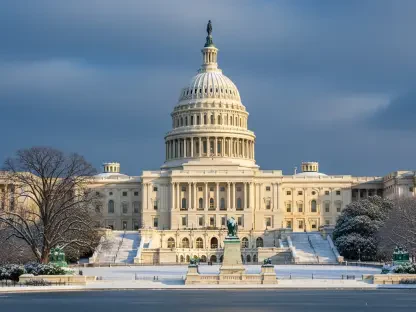In an increasingly competitive landscape where artificial intelligence (AI) talent is as valuable as gold, the U.S. government is upping its game to attract and retain the cream of the crop. Amidst the allure of Silicon Valley’s lucrative offerings, the government has rolled out a series of strategic moves to ensure it too can harness the expertise needed to propel its AI initiatives forward. An Executive Order focusing on enhancing AI capabilities within federal agencies and the appointment of Chief AI Officers are just the tip of the iceberg in the government’s concerted efforts to build a robust team of AI specialists. With this push, the U.S. government is acknowledging the pivotal role AI will play in shaping the future, and it is determined not to lag behind in the global tech race.
Competitive Edge Through Unique Missions
The quest to entice top AI talent begins with leveraging the government’s most distinguishing feature: its mission-centric nature. For those seeking more than just a paycheck, the opportunity to engage in work that has a profound impact on national and global affairs is an enticing proposition. This type of mission-driven work extends across various departments, each employing AI technology for critical projects, from tightening border security to enhancing veteran services. Notably, a comprehensive hiring sprint spearheaded by the Department of Homeland Security underscores the urgency of the government’s talent acquisition goals, highlighting the widespread recognition of AI’s importance.The allure of contributing to the public good, however, is merely the initial enticement. The U.S. government recognizes that retention hinges on creating an environment where AI professionals can thrive. That means granting the necessary bureaucratic empowerment and providing AI specialists with the appropriate resources to innovate effectively. For AI talents accustomed to the rapid development cycles in the private sector, adapting to the unique challenges within the government’s frameworks presents an intriguing professional journey, combining the drive for technological innovation with the complexities of navigating bureaucratic processes.
Strategic Incentives and Growth Paths
In order to compete with the private sector’s financial allure, the government has implemented enticing incentives. These include financial perks like loan repayment aid to offset the high cost of education needed for AI roles. Additionally, the government offers further training opportunities, attracting new hires while keeping the workforce at the forefront of AI expertise. The goal is not just recruiting top talent but creating a culture of ongoing development akin to the private industry.The success of these efforts hinges on creating a durable talent pipeline. Government initiatives such as the U.S. Digital Service and the Presidential Innovation Fellows are incubators for nurturing tech leadership within public service. Rooted in America’s history of attracting global tech talent, these programs reflect a confident stride towards embracing AI’s importance in global affairs. Joel Meyer concludes on a positive note, indicating America’s readiness to revolutionize public service with Silicon Valley’s innovation, drawing tech-savvy individuals eager to contribute to national progress.









